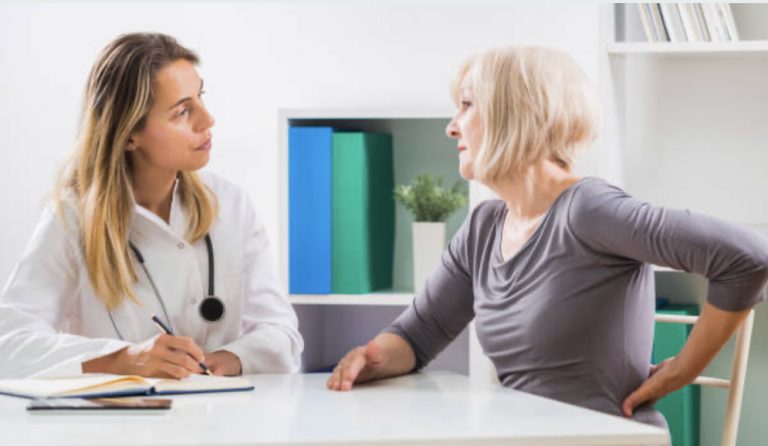Arthritis is one of the most common spinal conditions. In fact, most people will develop arthritis at some point in their lives. According to the CDC, 58.5 million people have arthritis and this number is rising every year.
What is Arthritis of the Spine?
Arthritis of the spine occurs when the smooth cartilage that lines the spinal joints breaks down and wears away. This can allow the underlying bone surfaces to rub against each other, leading to pain, inflammation, and a reduced range of motion. The loss of cartilage often spurs an overgrowth of bone and the formation of protective bone spurs. These bone deposits can create further problems if they invade the spinal canal and exert painful pressure on spinal nerves.
Living with arthritis can make tasks that were once simple seem impossible. Since arthritis of the spine is a condition that typically affects older individuals, managing arthritis is difficult. You may struggle to lift heavy objects, stay balanced, and participate in your favorite activities. Unfortunately, arthritis is not a reversible condition, but managing arthritis is certainly achievable. If you are interested in learning more about arthritis of the spine and managing arthritis symptoms, continue reading.
What does Arthritis of the Spine Feel Like?
In addition to steady or intermittent neck or back pain, living with arthritis of the spine can cause:
- A stiff neck or back that worsen after sedentary periods
- Swelling and warmth in the spinal joints, which may be related to changes in the weather
- Tenderness when the spine is touched
- Reduced spinal flexibility
- A grinding sensation in the spine during movement
- Numbness, tingling, or electrical sensations that radiate from the spine through an arm or leg
- Muscle weakness in an arm or leg
- Sleep disruption
Managing Arthritis of the Spine
Even though arthritis of the spine is largely unavoidable, there are several steps you can take to make living with arthritis manageable. These include:
- Exercising Regularly – Walking is an excellent, low-impact activity that can strengthen your muscles and bones without straining your spinal joints. When walking, always wear comfortable shoes. Also, become familiar with your limits and be careful not to overextend yourself.
- Achieving and Maintaining a Healthy Body Weight – Since your spine supports the majority of your body’s weight, even just a few extra pounds can take a significant toll on your spinal joints over time.
- Practicing Good Posture – When sitting, relax your shoulders, support your lower back, and place your feet flat on the ground. Take frequent breaks to get up, stretch, and walk around. When walking, stand tall, keep your chin up, look straight ahead, and don’t lean forward or backward. It is often difficult to have good posture when going on your phone, but holding it up higher to eye-height will reduce the strain on your back.
- Avoiding Tobacco – If you smoke, quit now. If you need help, ask your physician to recommend a smoking cessation program. Tobacco use can dramatically increase your risk of spinal problems and other health conditions, some of which are potentially serious.
- Listening to Your Body – Pay attention to your arthritis symptoms and see your physician when necessary. Also, eliminate clutter from your life – both mental and physical – so that you can reduce your stress level, free your mind and focus on what’s most important.
When it comes to any degenerative spine condition, managing arthritis of the spine symptoms is the most important step. Although arthritis can not be reversed, you can adapt to this new normal and return to a healthy lifestyle with a few minor lifestyle changes.
How is Arthritis of the Spine Treated?
Mild arthritis of the spine symptoms often respond well to a brief period of rest followed by physical therapy. If appropriate, pain relievers and anti-inflammatory medications can also be taken as needed. While these and other conservative treatments may provide sufficient symptom relief, it is important to understand that they can not reverse the effects of arthritis of the spine, nor can they prevent further spinal degeneration. If you are interested in learning more about treatment options for arthritis of the spine, you can learn more about it here.
BEST Health System
If you have been diagnosed with arthritis of the spine and are unsure of your next steps, contact BEST Health System. Our team is dedicated to providing patients with the most effective, least invasive treatment option that will allow them to live an active, happy lifestyle. If your back pain has been persistent for a while, it is time to seek help. Reach out to our team today to get started on your path to recovery. The BEST is yet to come.
